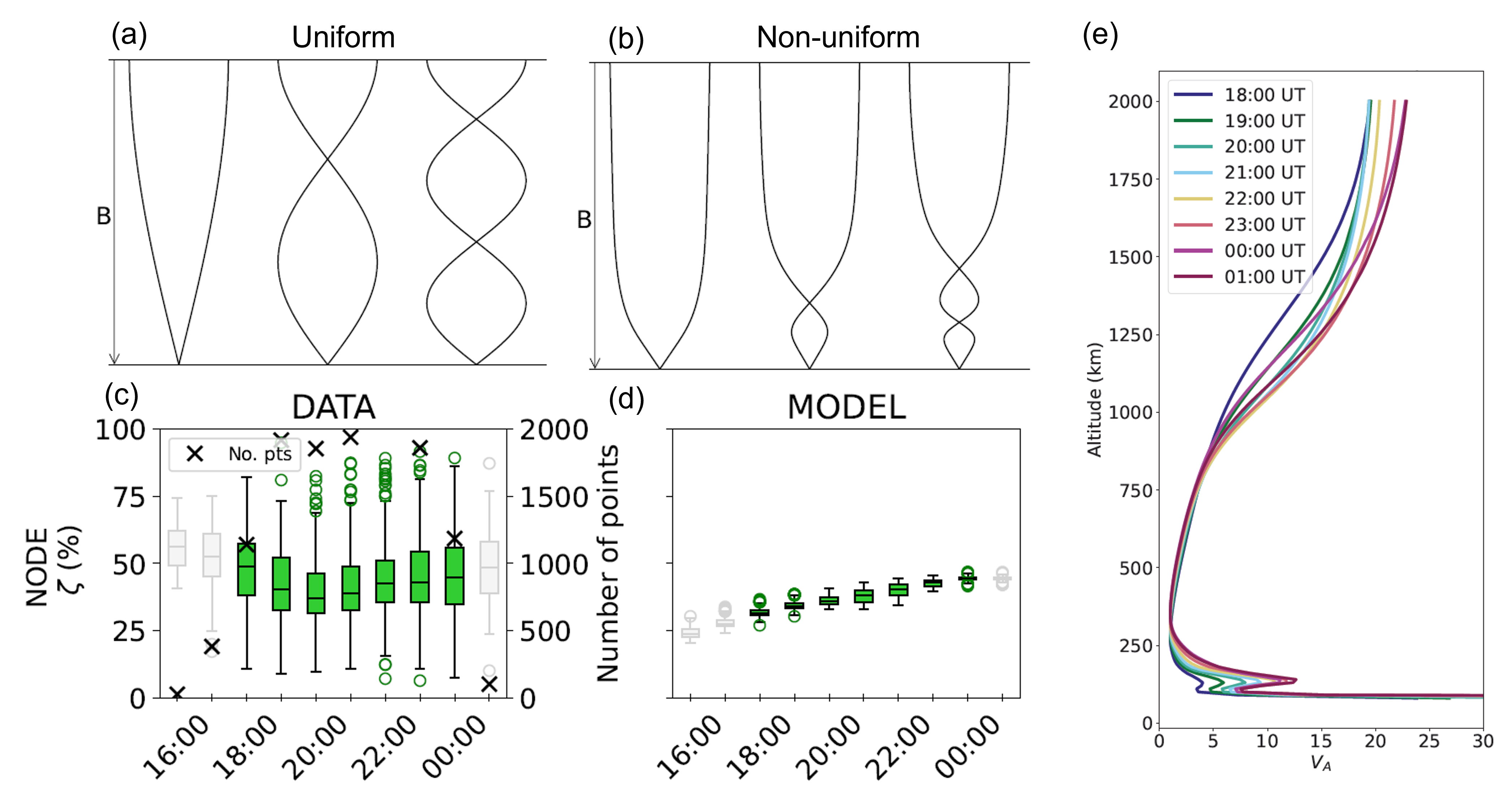MIST
Magnetosphere, Ionosphere and Solar-Terrestrial
Modeling and Observations of the Effects of the Alfvén Velocity Profile on the Ionospheric Alfvén Resonator
By Rosie Hodnett (University of Leicester)
The Ionospheric Alfvén Resonator (IAR) occurs when Alfvén waves partially reflect from boundaries in the ionosphere, towards the bottom of the ionosphere and above the F-region peak. The frequencies of the IAR are strongly controlled by the plasma mass density in the ionosphere, which is not uniform.
We have observed IAR in induction coil magnetometer data at Eskdalemuir, UK (BGS site), and extracted the harmonic frequencies for nine years of data. To model the harmonic frequencies, we used the International Reference Ionosphere and the International Geomagnetic Reference Field to model Alfvén velocity profiles. By solving a one-dimensional wave equation, we modelled the first five harmonics of the IAR for times where we had data. The wave structure of the electric field for a uniform case is shown in panel (a), and the resulting modelled harmonics for a non-uniform case is shown in panel (b). We modelled the frequencies with the lower boundary condition of the electric field of the wave being a node (shown in the figure below) and an antinode. By looking at the percentage difference between the fundamental frequency and the average separation of the harmonics (ζ) for both the node and antinode models and comparing this with the data, we find that the lower boundary is closest to being a node. ζ is presented for the node case, with UT, in panels (c) and (d), which show the data and the model respectively, binned by UT. The trend of increasing ζ towards midnight is due to changing Alfvén velocity profiles (shown in panel (e)), and suggests that the ionosphere is becoming more non-uniform. As such, measurements of IAR could be used to gain insight into the shape of the Alfvén velocity profile of the ionosphere.

BGS induction coil magnetometer data, search for 'induction coil': https://webapps.bgs.ac.uk/services/ngdc/
accessions/index.html
See publication for further information:
Hodnett, R. M., Yeoman, T. K., Beggan, C. D., & Wright, D. M. (2024). Modeling and observations of the effects of the Alfvén velocity profile on the Ionospheric Alfvén Resonator. Journal of Geophysical Research: Space Physics, 129, e2023JA032308. https://doi.org/10.1029/2023JA032308